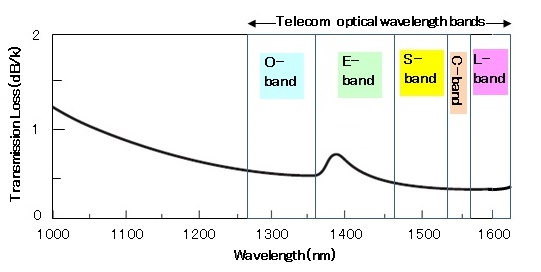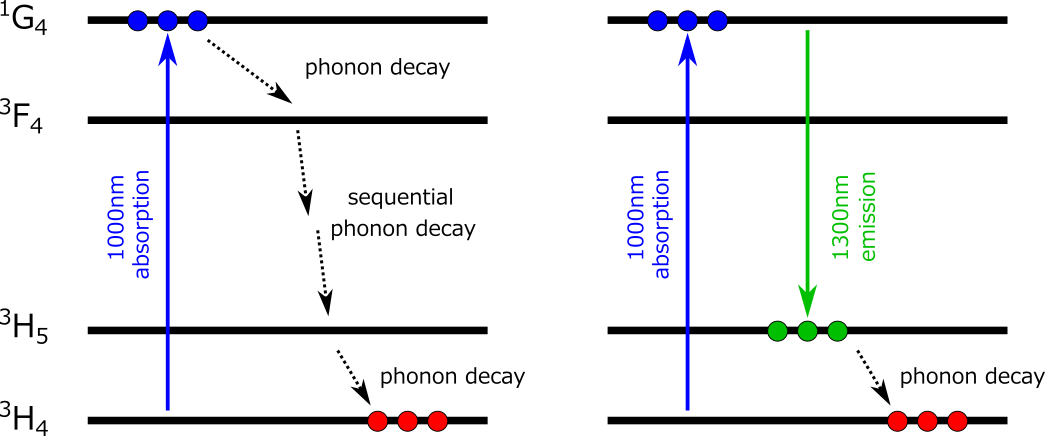JAPANESE / ENGLISH

JAPANESE / ENGLISH
Last updated on 05/7/2021
Praseodymium-doped fiber amplifier (PDFA) is one type of rare-earth-doped fiber amplifiers , which operates in the O-band. The O-band is now widely used in data centers (high-speed Ethernet), metro network, and access networks (various PON systems), whose distances are typically less than a hundred kilometers. Attenuation of conventional optical fiber in the O-band is nearly the twice of that in the C-band, and PDFA can be used to compensate the attenuation.

Figure 1: Optical telecommunication optical bands (PDFA operates in the O-band).
Figure 2 shows a simplified energy diagram of Pr, showing the energy levels involved in emissions at the O-band. Also shown in the figure are different energy transition behaviors of Pr ion doped in silica and fluoride glass.

Figure 2: Simplified energy diagram of Pr, and energy transitions in silica glass (left) and fluoride glass (right).
Note that decay from 3F4 to 3H5 level takes place by a series of phonon decays, via energy levels that are not shown in the figure.
Unfortunately, when doped in silica glass, emission from a Pr ion is very poor due to its large phonon energy. In silica glass, a Pr ion excited to the 1G4 level rapidly decays to the 3F4 level by generating multiple phonons, i.e. the energy turns into multiple atomic vibrations in the glass (and does not turn into a photon). Host glass with a low phonon energy is thus required in order to efficiently amplify light in the O-band using a PDFA.
Fluoride glass has a much lower phonon energy than silica glass, and among many compositions of fluoride glass, ZBLAN is the most commonly used fluoride glass host for a PDFA. In ZBLAN, a larger number of phonons are required for such non-radiative (no photon emission) decay to take place. The probability of the decay decreases with the required number of phonons, and thus non-radiative decay is well suppressed and efficient emission can be obtained by using ZBLAN.
FiberLabs offers the following products related to this article. Please visit these pages if you are interested in this article.
| Wavelength | O-band |
|---|---|
| Full lineup | O-band PDFA |
| Individual product | Bench-top Rack-mount OEM Module |